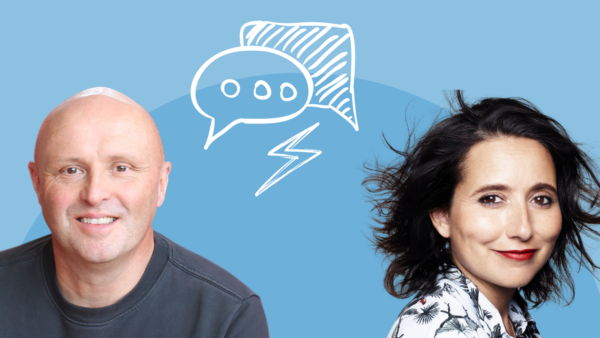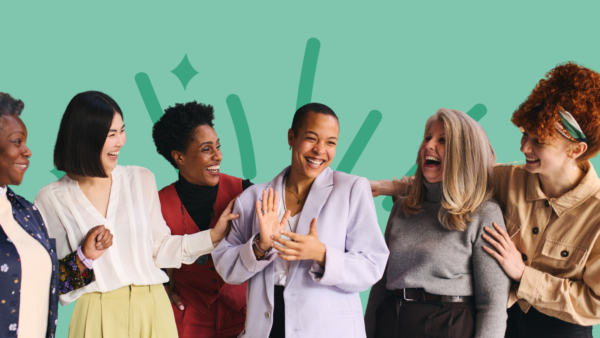All too often, Diversity and Inclusion strategies are seen as a technical necessity in organisations focused on fulfilling their legal requirements and stakeholder expectations. But this misses one of the greatest opportunities in people management today: discovering and encouraging the unique contribution that can be made by each and every employee that works for you. Today’s podcast relates to diversity and inclusion, the strengths way – how you can help your people identify what makes them truly unique and then support them in bringing that uniqueness to work each day.
My name’s Dr Paul Brewerton, the strengths guy, my podcasts publish first thing each working week to set you up for a strong one. I talk about work, life, work life, life life and all thing strengths – strengths being those qualities that energise you and which you are great at doing or have the potential to become great at doing. And even in these slightly more enlightened times (I know, that sometimes feels questionable doesn’t it), people are still, in general, more in the dark than they might be about their strengths and how to use them.
Diversity
Which brings me to diversity and first of all, the ‘so what’ of diversity? Why should we be concerned about bringing more diversity into the workplace. Well, a Boston Consulting Group study found that companies with more diverse management teams have 19% higher revenues as a result of being more innovative. An American Sociological Association study found that for every 1% rise in the rate of gender diversity and ethnic diversity in a workforce, there is a 3% and 9% rise in sales revenues, respectively.
According to most of the research on the topic of diversity, including the Boston Consulting Group work, this improvement in business performance due to increased diversity is largely attributed to an increased capacity for creativity and innovation, in itself resulting from the inclusion of a wider range of perspectives and sets of experiences, which is more possible in a more diverse workforce. Thus, if you encourage greater diversity, you’re going to create more innovation, more capacity for creative thought and as a result, better decision making, from top to bottom.
Beyond this clear business benefit, there is of course the moral question of our duty of care to each individual working in our organisation and ensuring that each person feels valued, understood and can bring their best to work, in a safe, considerate, thoughtful environment, free from prejudice.
Which sounds amazing in theory. Apart from a couple of important design shortcomings in humans which can get in the way.
You see, we humans are all affected by a variety of unconscious biases – we are psychologically primed to reduce the amount of information our brains process and at the same time, we are a product of our experiences and socialisation. Combine these factors and we humans inevitably make ‘short cut’ judgements about other people based on very limited information such as their group membership – whether they are male or female, young or old, gay or straight, black or white, even extroverted or introverted. This can quickly lead to stereotyping judgements which are rarely accurate and which inevitably miss a large proportion of the detail of the rich, unique story of each individual human that we come into contact with.
So that’s the challenge of diversity in a nutshell.
Inclusion
But this podcast is about diversity and inclusion so what about inclusion, what’s that all about? If we think of diversity in terms of the representation of different groups within our organisation, typically grouped by gender, age, ethnic background, cultural background, sexual orientation and so on, inclusion might be defined more as the exploration, appreciation and acceptance of these differences, as well as understanding the core uniqueness of each individual, referencing but not limited to their membership of various groups.
Now we’re talking about a deeper level of inquiry and understanding – withholding our natural predisposition towards judgment, suspending our assumptions and just listening to someone’s story and experience of the world: their life, experiences, views, values, perspectives, preferences. Now we’re getting somewhere closer to truly understanding and valuing the diverse qualities of people we come into contact with and gaining value from their perspectives on the world. And that’s what is going to drive business organisational benefit.
Another challenge here for us humans as we plough on regardless through the 21st century is our good friend’s political correctness and our consequent anxieties about asking questions of other people to better understand them and their experience. For many people, this relates to a fear of social embarrassment. What if we offend someone by asking a stupid question? What if we use the wrong term, how embarrassing would that be? What if we make ourselves look silly by showing how biased and ignorant we are? Better not to go there, leave it alone, brush it under the carpet.
At the end of the day, we’re all the same right, so probably best to assume that everyone’s pretty much like us? Well, it’s true that we’re all human beings, so that is a point of similarity and yes we do have lots in common being part of the same species and all, but we also have a lot that isn’t in common. Appreciating those differences and what they mean can build respect, understanding and a real depth of connection from human to human when we inquire at that deeper level.
So, how can strengths help?
Well, as I mentioned, strengths are those qualities that energise us and that we are great at or have the potential to become great at. Strengths also often relate to our underlying values, as well as to our passions and loves. So strengths can provide a ‘way in’ if you like to understanding a colleague at work at a deeper level, providing a common framework as a start point for conversation but also allowing you to go deeper, much deeper, by asking your colleague to tell their ‘strengths stories’ – why they value and enjoy using a particular strength or combination of strengths and perhaps where that came from – what in their experience of life led to them being energised and motivated in that way.
Our strengths assessment tool, Strengthscope®, has an interesting statistic about it – with 24 work-based strengths included in our model, the chances of someone reporting the same Top 7 strengths in the same order as anyone else is 1 in 1.3 billion. For me, that’s a great way of getting a conversation going about someone’s uniqueness and how they can make their strongest contribution at work. Of better understanding the diverse qualities that our colleagues can bring to work. And of being appreciative and inclusive of those qualities when we make our way through each day as part of the various groups and teams that we inhabit.
So what are my top tips for practically bringing diversity and inclusion to life in your world? I have 3:
1. Take the time to find out more about each person you work with
Set aside time to really find out more. One thing I’ll sometimes do at work is to spend an hour when someone new joins the Strengthscope team to do a ‘whole life share’ from birth to now, where each of us tells the story of us, whatever we choose to share, in a totally confidential and safe way, so that we can get to start to know each other better.
2. Be prepared to ask questions
Be prepared to ask questions to increase your understanding of other people’s experience. Be respectful, be prepared to be wrong, practice good coaching techniques of questioning and listening. This takes practice and skill and risk, but it’s the only way that you can really deeply understand and appreciate differences and the value of those differences.
3. Use the strengths approach to key into the unique qualities of each individual
This will give you a common language and understanding about what drives and energises someone else, so that you can let them know what you value most about those unique qualities, when you have seen those strengths recently, so that you can encourage them to use those strengths more and create even greater value, as well as bringing more of themselves to work.
That’s it for this week. True diversity and inclusion, and how strengths can help. Get curious, stay appreciative and get to it. Till next time.
This podcast is now available on all major podcast platforms. Find it on Apple podcasts, Spotify, Google podcasts, Stitcher, ACast and Soundcloud. Check out the back catalogue and subscribe to get them every Monday morning!












